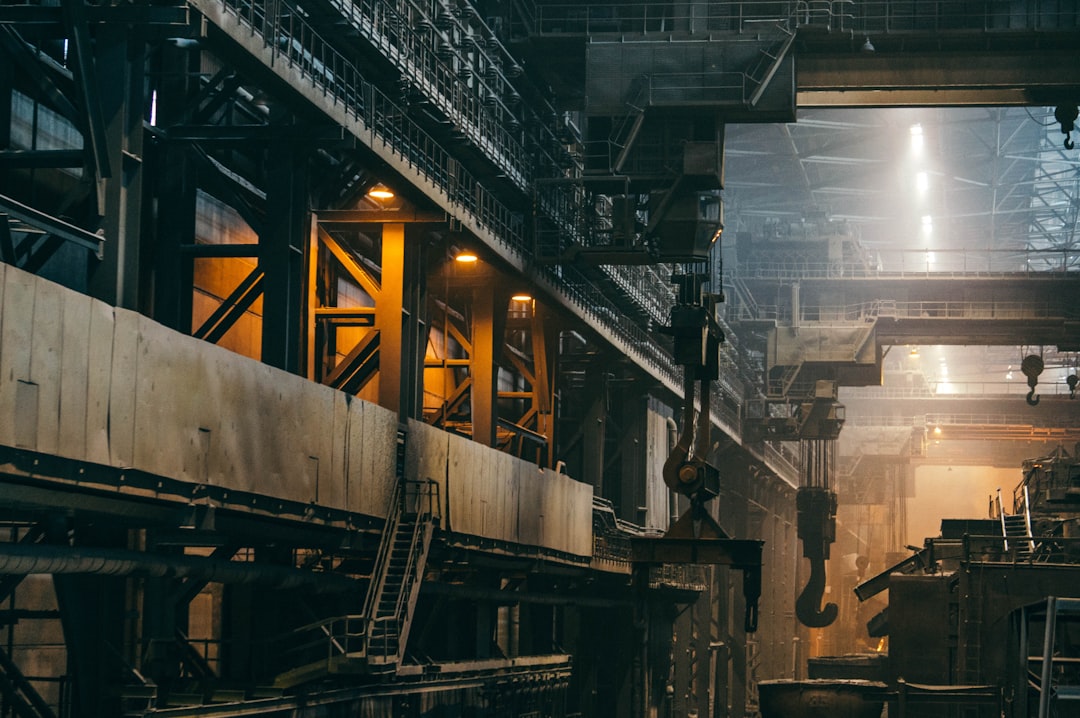Factory vs. Mill
What's the Difference?
A factory and a mill are both industrial facilities that play a crucial role in manufacturing and production processes. However, there are some key differences between the two. A factory is a large building or complex where goods are produced on a large scale using machinery and labor. It typically involves the assembly of various components or raw materials to create finished products. On the other hand, a mill is a facility that primarily focuses on processing raw materials, such as grains, wood, or metal, into usable products or materials. Mills often involve grinding, crushing, or refining processes to transform the raw materials into a more refined form. While both factories and mills contribute to the manufacturing industry, their specific functions and processes may vary.
Comparison

| Attribute | Factory | Mill |
|---|---|---|
| Definition | A building or group of buildings where goods are manufactured or assembled by machines or workers | A building or group of buildings equipped with machinery for processing raw materials into finished products |
| Primary Function | Manufacturing or assembling goods | Processing raw materials |
| Types | Automobile factory, textile factory, electronics factory, etc. | Textile mill, paper mill, steel mill, etc. |
| Size | Can vary in size from small-scale to large-scale operations | Can vary in size from small-scale to large-scale operations |
| Equipment | Includes machinery, assembly lines, tools, and other manufacturing equipment | Includes machinery, processing equipment, conveyors, and other specialized equipment |
| Raw Materials | Uses raw materials to manufacture finished goods | Processes raw materials into finished products |
| Output | Produces finished goods ready for distribution or sale | Produces processed materials or finished products |
| Labor | Requires a combination of skilled and unskilled labor | Requires a combination of skilled and unskilled labor |
| Industry | Found in various industries such as manufacturing, automotive, electronics, etc. | Found in industries such as textile, paper, steel, etc. |

Further Detail
Introduction
Factories and mills are both industrial establishments that play a crucial role in the production and manufacturing sectors. While they share similarities in terms of their purpose and function, there are distinct differences between the two. In this article, we will explore and compare the attributes of factories and mills, shedding light on their unique characteristics and contributions to various industries.
Definition and Purpose
A factory is a large building or complex where goods are manufactured or assembled using machinery and labor. It serves as a centralized location for the production of goods, often involving multiple stages of manufacturing. On the other hand, a mill refers to a facility that processes raw materials, such as grains, metals, or textiles, into finished products or intermediate materials. Mills are typically specialized in a specific type of processing, such as flour milling, steel production, or textile manufacturing.
Size and Scale
Factories are generally larger in size and scale compared to mills. Due to their comprehensive manufacturing processes, factories require ample space to accommodate various production lines, machinery, and storage areas. They often span multiple floors or even occupy extensive areas of land. In contrast, mills tend to be more compact and focused on specific processing activities. While they may still be sizable, mills are typically smaller than factories and designed to optimize efficiency for their specialized operations.
Production Processes
Factories encompass a wide range of production processes, depending on the industry and goods being manufactured. They involve multiple stages, including raw material acquisition, processing, assembly, quality control, and packaging. Factories often employ assembly lines or automated systems to streamline production and maximize output. In contrast, mills are primarily concerned with processing raw materials into finished or intermediate products. Their processes may involve grinding, refining, smelting, or weaving, depending on the specific industry. Mills focus on transforming raw materials into usable forms rather than the comprehensive production of final goods.
Industry Applications
Factories are prevalent across various industries, including automotive, electronics, pharmaceuticals, and consumer goods. They are responsible for producing a wide range of products, from cars and smartphones to clothing and household appliances. The versatility of factories allows them to adapt to different manufacturing needs and cater to diverse consumer demands. On the other hand, mills are more specialized and cater to specific industries. For example, textile mills process fibers into fabrics, while steel mills produce steel products for construction and manufacturing. Mills are often crucial components of supply chains, providing essential materials for further production.
Workforce and Labor
Factories typically employ a larger workforce due to their extensive production processes and diverse operations. They require workers with various skills, including machine operators, assemblers, technicians, engineers, and quality control personnel. The labor force in factories may consist of both manual laborers and skilled professionals. In contrast, mills may have a more focused and specialized workforce. For instance, a steel mill may employ metallurgists, engineers, and technicians with expertise in steel production. Mills often require workers with specific knowledge and training related to the particular processing activities they undertake.
Environmental Impact
Both factories and mills can have significant environmental impacts, although the nature of these impacts may differ. Factories, especially those involved in heavy industries, may generate air and water pollution, produce waste materials, and consume substantial amounts of energy. However, modern factories are increasingly adopting sustainable practices, such as implementing renewable energy sources, optimizing resource usage, and reducing emissions. Mills, on the other hand, may have specific environmental concerns related to their processing activities. For example, textile mills may release wastewater containing dyes and chemicals, while paper mills may generate significant amounts of waste paper. Efforts are being made in both sectors to minimize environmental footprints and promote sustainable practices.
Conclusion
Factories and mills are integral components of the industrial landscape, each with its own distinct attributes and contributions. While factories focus on comprehensive manufacturing processes and the production of final goods, mills specialize in processing raw materials into finished or intermediate products. Factories are generally larger in size and employ a diverse workforce, while mills are more compact and have a more specialized labor force. Both establishments have environmental impacts, but efforts are being made to mitigate these effects through sustainable practices. Understanding the attributes of factories and mills helps us appreciate their roles in various industries and highlights the importance of their contributions to global manufacturing and production.
Comparisons may contain inaccurate information about people, places, or facts. Please report any issues.